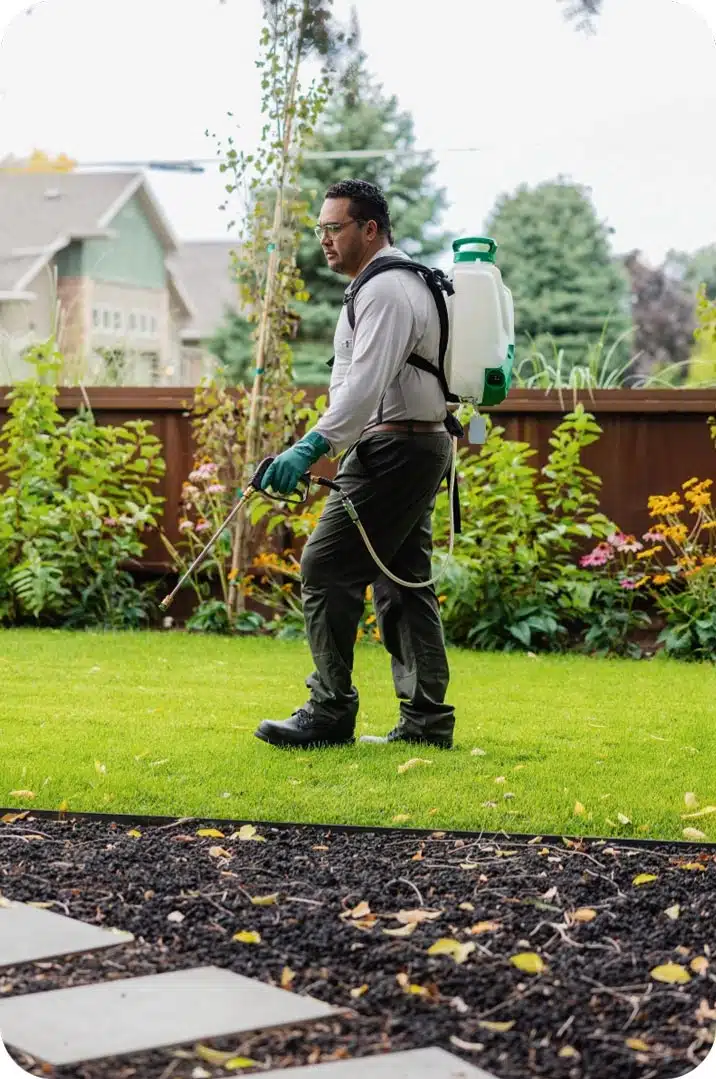A1 Pest Control Charlotte NC Bed Bugs - Expert Elimination Services
A1 Pest Control Charlotte NC Bed Bugs - Expert Elimination Services
Blog Article
Bed Bug Therapy Breakdown: Contrasting Chemical Vs. Non-Chemical Solutions
In the world of pest control, especially when managing the relentless issue of bed insects, the choice in between chemical and non-chemical therapy services can be a pivotal one. Both approaches offer distinctive benefits and downsides, affecting elements such as performance, safety considerations, and overall cost. By examining the nuanced details of each method, a clearer understanding of which course to seek in dealing with a bed insect infestation can be acquired.
Efficiency of Chemical Therapies
Chemical therapies for bed bug problems have been widely identified for their rapid and potent efficacy in getting rid of these parasites. When taking into consideration the performance of chemical treatments, it is critical to comprehend that they can offer a thorough and quick remedy to a bed pest trouble.
Furthermore, chemical therapies have the advantage of supplying recurring results, suggesting that they can proceed to eliminate bed bugs even after the initial application. This recurring activity is especially valuable in combating any kind of prospective re-infestations. Furthermore, the rapid action of chemical treatments can bring alleviation to individuals facing serious bed pest problems, allowing them to reclaim control of their space rapidly.
Safety And Security Interest In Chemical Solutions
One crucial aspect that needs mindful consideration when making use of chemical options for bed pest treatment is making sure the safety and security of residents and the setting. Direct exposure to certain chemicals utilized in bed insect treatments can lead to respiratory system concerns, skin irritability, or other damaging reactions, specifically in individuals with pre-existing problems or level of sensitivities.
Furthermore, the environmental influence of chemical options is another considerable consideration. Some pesticides utilized in bed insect therapies might be damaging to advantageous bugs, wild animals, and ecosystems if they leach right into the soil or water systems. It is crucial to utilize chemical therapies judiciously, adhering to safety and security guidelines, and thinking about much less poisonous choices to minimize these risks and make sure the risk-free and efficient management of bed pest invasions.
Benefits of Non-Chemical Strategies
Thinking about the prospective safety and security issues and environmental impact connected with chemical services for bed pest treatment, checking out non-chemical strategies offers an encouraging alternative with numerous distinct advantages. Non-chemical methods use a safer option for families, specifically those with people, family pets, or kids delicate to harsh chemicals. These techniques eliminate the threats of exposure to hazardous compounds, decreasing the potential for adverse health and wellness effects. Furthermore, non-chemical treatments are eco-friendly, as they do not add to air or water contamination, making them a sustainable option for parasite control.
In addition, non-chemical solutions can be reliable in targeting bed bugs, consisting of hard-to-reach locations where chemical therapies may not penetrate - A1 bed bug exterminator charlotte. Approaches such as warmth treatment, vacuuming, vapor cleaning, and mattress encasements provide detailed removal without the usage of dangerous chemicals.
Limitations of Non-Chemical Treatments

Furthermore, non-chemical therapies typically call for multiple applications to accomplish effective eradication. This can be taxing and might not constantly ensure complete elimination of all bed insects and their eggs, particularly in hard-to-reach or hidden areas.
Furthermore, the success of non-chemical treatments heavily depends on correct execution and thoroughness, which can be testing for people without expert expertise. Inadequate application of non-chemical methods may lead to insufficient elimination, resulting in relentless problems and the requirement for added therapies.
For that reason, while non-chemical therapies have their benefits, it is essential to recognize these limitations and consider them when identifying the most efficient method for taking care of bed insect infestations.
Price Comparison: Chemical Vs. Non-Chemical Options
Given the constraints connected with non-chemical treatments, a vital aspect to examine in the context of bed bug monitoring is the cost contrast in between chemical and non-chemical choices. Chemical therapies commonly include the application of pesticides by professionals, which can vary from $250 to $900 per room, relying on the extent of the infestation and the size of the area to be dealt with. In comparison, non-chemical treatments like heat treatment or vapor can be more pricey, with expenses varying from $1,000 to $6,000 for an entire home. While the first price of chemical therapies might appear reduced, multiple treatments might be called for to totally remove the problem, potentially boosting the general cost. On the various other hand, non-chemical choices might supply a more lasting and eco-friendly remedy, although they can be cost-prohibitive for some individuals. Eventually, when considering the expense of bed pest therapy choices, it is necessary to evaluate the in advance expenses versus pest prevention the efficiency and long-lasting sustainability of the chosen approach.
Verdict

Considering the possible safety worries and ecological influence associated with chemical services for bed pest therapy, checking out non-chemical techniques provides an encouraging choice with several distinctive benefits.Offered the restrictions linked with non-chemical therapies, an important aspect to examine in the context of bed insect monitoring is the More Bonuses expense comparison between chemical and non-chemical options. In contrast, non-chemical therapies like warm treatment or vapor can be extra costly, with costs varying from $1,000 to $6,000 for an entire home. While the preliminary cost of chemical treatments may seem lower, several treatments might be required to completely eliminate the problem, possibly boosting the general expense.In conclusion, when comparing chemical and non-chemical bed bug treatment choices, it is vital to take into consideration efficiency, safety and security, benefits, limitations, and price.
Report this page